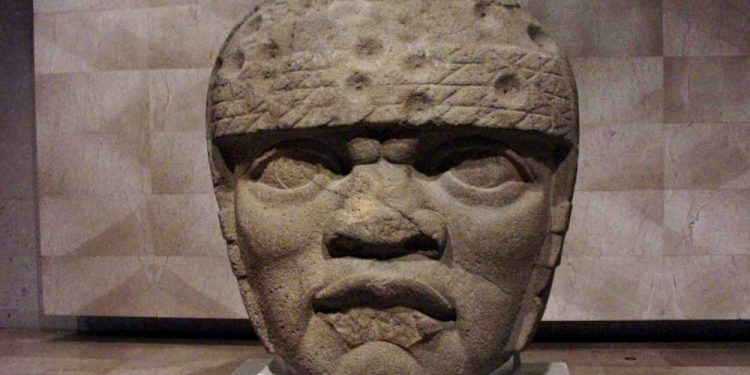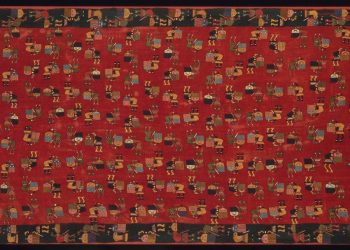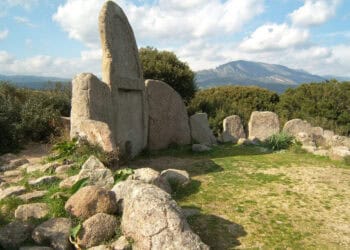Several Southeastern tribes have long said that their ancestors received immigrants from Mesoamerica and that these immigrants introduced many cultural changes. Far too few anthropologists were listening. – Author: Richard Thornton
When we talk about the ancient civilizations of Mesoamerica, the first thing people think about is the Maya and Aztec cultures. However, even though these two cultures are ancient, one civilization laid down the foundations for future civilizations, accelerating cultural, social, and religious development in Mexico and Central America. This civilization is known as the Olmec culture, and they thrived in present-day Mexico around 1200 BC. Best known today for their carved colossal heads, the Olmec culture was well advanced in architecture, art, trading, and, most importantly, in the social environment.
Mesoamerican Culture
The Olmec were among the first cultures in Mexico and Central America. San Lorenzo was the most famous and probably the biggest city of Ancient Olmec. Archeologists dubbed the ancient city San Lorenzo since the city’s original name was lost to time. San Lorenzo was built on the river island around 1200 BC. Archaeologists consider the Olmecs one of only six “pristine” civilizations, cultures that developed independently without the influence of other civilizations.
Lost Culture
The Olmecs thrived in the present-day Mexican states of Tabasco and Veracruz approximately three thousand years ago. Around 400 BC, the Olmec civilization started to decline, and major cities were reclaimed by nature. Because so much time has passed, most of the information about the Olmec culture was lost. There is no evidence that the Olmec culture had manuscripts like the Maya or Aztecs. This means that we have minimal information about the Olmec culture. All that remains of the Olmec culture are stone carvings, ruined cities, and a handful of wooden artifacts pulled from a bog at the El Manatí site. Archaeologists have discovered and pieced together everything we know about the Olmec civilization.
Their Religion
The Olmec were a religious civilization, and contact with the gods was essential to their culture. Although no structure from Olmec culture was fully identified as a place of worship, there are areas of archaeological sites considered heavily religious such as La Venta and El Manatí. In addition, the remaining bones found on sites indicate that they may have practiced human sacrifices as offerings to their gods, which influenced later civilizations such as the Maya and Aztecs.
Ancient Deities
The Olmecs were polytheistic, believing in many deities who controlled the natural forces of life and death. Religion was centered around 8 Olmecs gods: the Dragon, the Bird Monster, the Shark Monster, the Banded-Eye god, the Maize God, the Rain Spirit, the Were-Jaguar, and the Feathered Serpent. Evidence of their gods can be found in later Mesoamerican mythology, as we know that Maya and Aztecs both worshiped feathered serpent deities such as Kukulkan and Quetzalcoatl.
Intricate Art
Most of what we know about Olmec civilization and its complex society is from the works they created on stone. This ancient civilization was home to highly talented artists and sculptors, crafting all kinds of statues, figurines, stones, masks, and many other beautiful pieces of art. The most famous creations of the Olmec people are massive, colossal heads. As many as seventeen colossal heads were found on four different archeological sites. The Olmec were also very good with wood, and a small amount of wood art has survived in the bogs of the El Manati site, while most of it has resolved over centuries.
Olmecs Were Talented Architects and Engineers
Masters of aqueducts, they knew how to construct intricate aqueducts bringing flowing water into their cities. The aqueducts were built using massive stones and precisely carved. But aqueducts weren’t the only thing they were good at. In the famous Royal Compound in La Venta, archeologists have found a 35-meter tall clay pyramid. The pyramid has never been excavated, but a magnetometer survey in 1967 found an anomaly high on the south side of the pyramid. Most of the speculation ranges from a section of burned clay to a cache of buried offerings to a tomb.
Olmec and Trading
The Olmec traded with other cultures all over ancient Mesoamerica. Objects from different regions, such as obsidian from the more mountainous areas (North and Central) of Mexico or jadeite from present-day Guatemala, have been discovered in ancient Olmec sites. Additionally, Olmec objects, such as celts, statues, and figurines, were found in archeological sites of other cultures. Other cultures have learned much from the Olmec, as some lesser-developed civilizations adopted Olmec pottery techniques.
Influence of Olmecs
Historians love to say that the Olmec were Mesoamerica’s “mother” culture. Civilizations like the Maya, Aztecs, Veracruz, and Toltecs adopted certain parts of the Olmec culture. Certain gods like, the Feathered Serpent, the Maize God, and the Water God would live on in the cosmos of younger civilizations. Other civilizations did not adopt Olmec’s art, such as colossal heads and massive thrones. Still, different styles were adopted, and even an untrained eye would notice similarities in later artistic art from Maya and Aztecs.
Political power
Their cities were ruled by powerful families of the ruler-shaman who wielded massive power in their society. This is seen in their public works, and colossal heads are a pure example. Records from geological research have shown that the source of stone used in San Lorenzo, for example, was transported to the site from quarries located 50 miles away. To move those massive rocks from the quarry to workshops in the city, the Olmec people used a combination of sleds, rollers, and rafts before carving them without metal tools. The fact that the Olmec rulers could command such a workforce speaks about their political influence and control.
End of the Olmec civilization
No one knows what happened to the Olmec civilization. After the decline of La Venta in 400 BC, the Olmec pretty much disappeared from the historical record. Climate change may have also played a part: the Olmec existed on a few essential crops, and any change that affected the maize, beans, and squash that comprised their staple diet would have been disastrous. Another theory for the considerable population drop proposes relocation of settlements due to increased volcanic activity is the cause rather than the extinction of civilization.
Join the discussion and participate in awesome giveaways in our mobile Telegram group. Join Curiosmos on Telegram Today. t.me/Curiosmos











